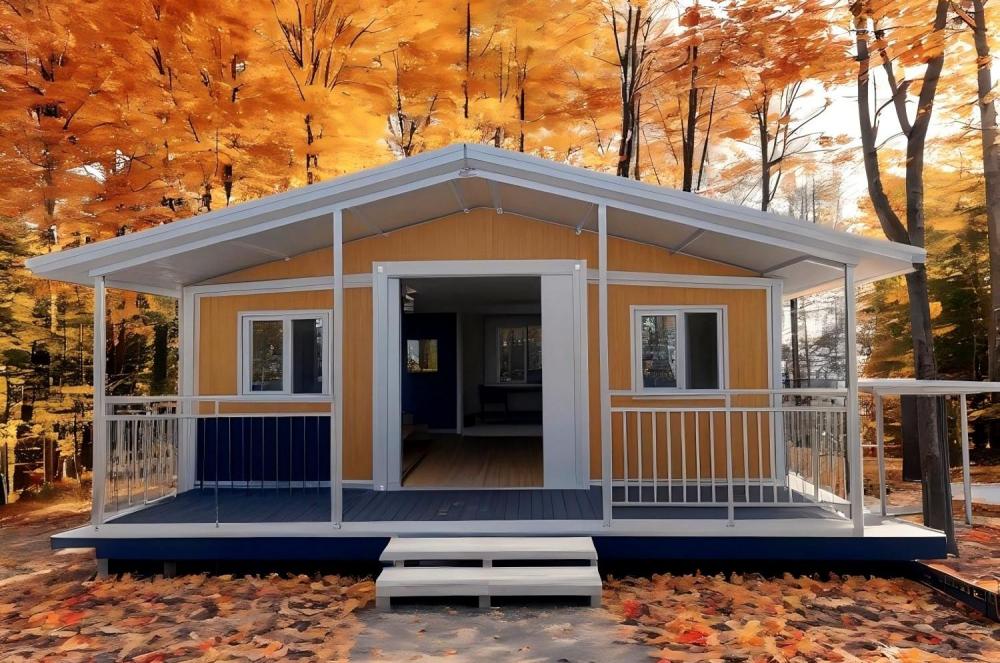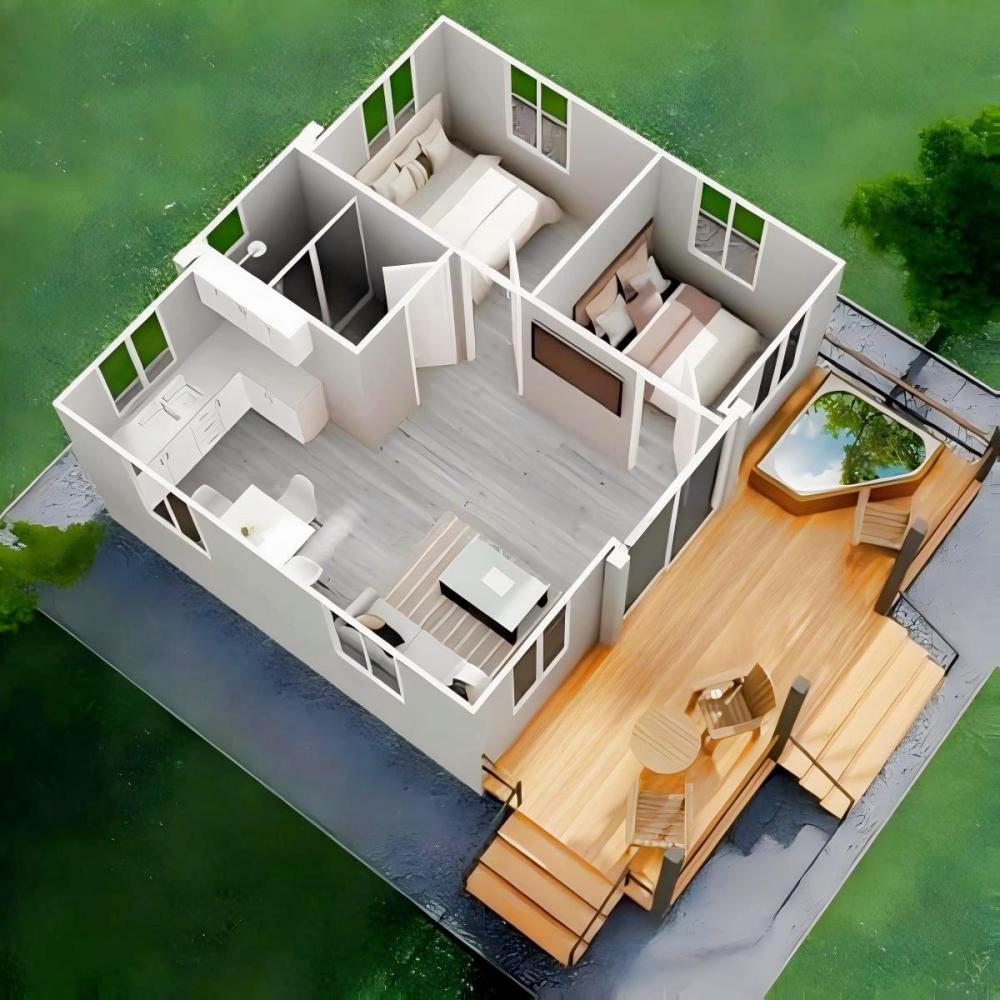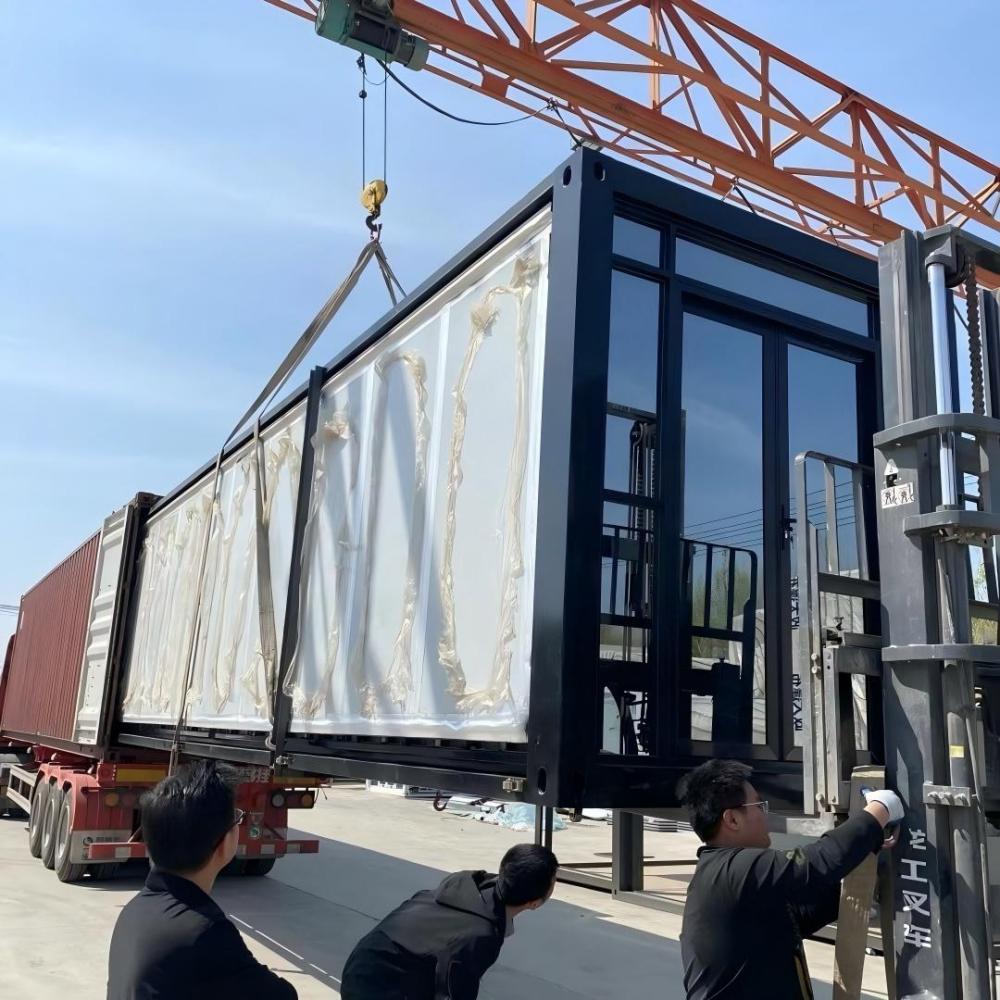Prefabricated Container Houses vs. Conventional Houses: A Comprehensive Analysis of Costs and Benefits
Introduction: The Rise of Prefab container home and Core Questions
Against the backdrop of soaring housing costs and the popularization of the concept of sustainable development around the globe, prefabricated container houses are rapidly gaining popularity as an innovative housing solution. These modular homes, which are converted from shipping containers, have become a focus of attention for budget-sensitive homebuyers and environmentalists due to their low-carbon, environmentally friendly, and quick-to-build features. However, a central question always lingers in the minds of potential buyers: are prefabricated container homes really cheaper than traditional homes? In this article, we will analyze the initial construction cost, hidden expenses, long-term maintenance and comprehensive value and other dimensions to present you with a comprehensive cost comparison picture.

Initial construction cost: the innate price advantage of container housing
1.Container housing: the double support of low-cost materials and efficient construction
Material costs are significantly lower
The large-scale production and recycling characteristics of shipping containers make them a very cost-effective building material. A new standard 20-foot container costs about US$3,000-5,000, while traditional building materials (masonry, concrete, wood) for the same area cost more than US$10,000. If used containers in good condition are used, the cost can be further compressed to US$2,000-3,000, and the material cost is only 1/3~1/5 of that of a traditional house.
Short construction cycle, sharp reduction of labor cost
The main structure of prefabricated container houses has been standardized in factories, and only the process of module splicing and interior installation needs to be completed on site, so that the overall construction cycle is usually 4-8 weeks, which is much shorter than 6-12 months for a traditional house. The overall construction period is usually 4-8 weeks, which is much shorter than the 6-12 months of traditional houses. The compression of the construction period directly reduces the labor cost. According to the industry data, the labor cost of the container house can be reduced by 30%-50% compared with that of the traditional house.
2.Traditional Homes: High Initial Investment
The Double Premium of Materials and Labor
Traditional homes rely on large amounts of cast-in-place concrete, solid wood framing, and customized building materials, with the cost of basic building materials alone reaching $200-300/sq. ft. ($200,000-$300,000 for a 1,000 sq. ft. home). Add to this the need to coordinate multiple trades (masons, electricians, carpenters, etc.) and the labor costs continue to accrue over the course of the construction period, further driving up the initial expense.
Hidden Costs of Design Flexibility
The personalized design of a traditional home requires high architectural drawing fees, engineering approval fees, and foundation treatment for special terrain (e.g., piling, basement) can add tens of thousands of dollars in costs, all of which are amortized into the initial budget to make the barrier to entry for traditional homes significantly higher than that for containerized homes.
Hidden Costs: Details Determine the Final Price
1.Container Houses: Potential Expenses for Retrofitting and Compliance
Functionalized Retrofitting Cannot Be Neglected
Marine containers need to undergo systematic retrofitting before they can become livable spaces: laying down insulation (about US$50-100/sq. ft.), installing windows and doors (US$2,000-5,000 per container), integrating plumbing (US$10,000-30,000), and integrating multiple containers (US$10,000-30,000), and installing a new building. USD 10,000-USD 30,000), and structural steel reinforcement for multi-container splicing (10%-20% increase in cost for each additional layer of stacking). These modification costs can add 30%-50% to the base cost.
Transportation and Site Preparation Challenges
Transportation of large containers over long distances (especially in remote areas) can incur logistical costs of US$5,000-10,000, while site preparation such as grading and pouring concrete footings can cost US$10,000-20,000. In addition, building codes for containerized housing are not clear in some areas, and additional compliance costs (e.g., fire rating upgrades) may be required.
2.Conventional Housing: The Pitfalls of Schedule Delays and Immediate Maintenance
Construction Delays Lead to Cost Overruns
Conventional housing is significantly impacted by the weather and material supply chain, and it is estimated that about 60% of projects are subject to schedule delays, with labor and financing costs increasing by 1%-2% for every month of delay.
Maintenance investment is needed when moving in
Newly built traditional houses often need basic maintenance such as roof waterproofing and painting in the first year, with an average expenditure of about US$5,000-10,000, while the maintenance needs of containerized houses are relatively low in the initial period.
Long-term cost game: durability, maintenance and energy efficiency
1.Container house: maintenance for durability
Regular maintenance to ensure longevity
The main body of the container is made of weather-resistant steel (Corten Steel), but long-term exposure to humid environments still requires annual anti-rust treatment (US$500-1,000/year), and replacement of sealing strips (about US$2,000 every 5 years), with an overall annual maintenance cost of about US$2,000-4,000. Overall annual maintenance cost is about 2,000-4,000 USD. With proper maintenance, the life expectancy can be 20-30 years, significantly better than wood-frame conventional homes (which are susceptible to termites and mold), but less than the 50+ year life expectancy of brick-frame construction.
Energy performance depends on the details
High quality insulation (e.g. spray polyurethane foam) can bring the energy consumption of a containerized house to the same level as that of a conventional house, but insufficient insulation can increase cooling costs by 20-30% in summer.
2.Conventional houses: ongoing investment in long-term maintenance
High frequency and cost of maintenance
Conventional houses have wooden roofs that need to be replaced every 10-15 years (at a cost of US$20,000-50,000), exterior paint that needs to be repainted every 5 years (US$5,000-10,000), and HVAC repairs that can cost an average of US$5,000-10,000 per year to maintain, which is significantly higher than for containerized houses. Energy efficiency is dependent on secondary investments.
Energy Efficiency Depends on Secondary Investment
Although modern conventional homes can be made more energy efficient by installing solar panels and double glazing, the initial investment is in the tens of thousands of dollars, whereas the compact layout of containerized housing naturally offers energy efficiency advantages.

Non-cost factors: trade-offs between design, environmental protection and market value
1.Freedom of design: modularity vs. personalization
Container houses are limited by standard box dimensions (usually 8 ft. wide × 20/40 ft. long), and although they can be stacked and cut to achieve a duplex or L-shape layout, it is costly to realize complex curved surfaces and shaped structures. Traditional homes can be completely customized to the owner’s needs, from vaulted ceilings to underground wine cellars, with unlimited design freedom, but at the cost of higher construction costs.
2.Sustainability: Circular Economy vs Conventional Energy Consumption
Container houses are inherently environmentally friendly: a single retrofitted container can reduce steel consumption by 1.5 tons, and reduce carbon emissions by over 40% compared to conventional homes. If with solar panels, rainwater recycling system, can further realize the “zero carbon housing”. The use of environmentally friendly materials (e.g. recycled timber, low carbon concrete) in traditional homes can also improve sustainability, but the initial cost will increase by 15%-20%.
3.Resale Value: Niche Market vs Mainstream Acceptance
Container houses are popular with young people for their industrial style design, but their status as “atypical homes” in the traditional real estate market may result in a discounted valuation (about 10%-20% below a traditional home of the same size). In contrast, traditional homes are more likely to realize asset appreciation in long-term holdings because they meet mainstream aesthetic and loan appraisal standards.
CASE COMPARISON: 1,000 Sq. Ft. Home Cost Sidelights
Project | Prefab Container Homes | Conventional Homes |
Initial Cost | $100,000–$150,000 | $200,000–$300,000 |
5-Year Maintenance | $10,000–$20,000 | $30,000–$50,000 |
Construction Cycle | 8–12 Weeks | 6–12 Months |
Carbon Footprint (CO₂) | 20–30 Tons | 50–80 Tons |
Design Customization | Moderate (modular limits) | High (no structural constraints) |

HOW TO CHOOSE: MATCHING NEEDS AND PRIORITIES
Scenarios suitable for choosing a container home:
First-time homebuyers with limited budgets (target cost to be controlled within $150,000)
Vacation homes, temporary residences for the environmentally conscious or those who want to get on the ground quickly
Remote areas or areas with complex terrain (relying on modular transportation and simple foundations)
Scenarios more suited to a traditional home:
Large families pursuing luxury customization or multigenerational co-housing (requiring oversized spaces and complex layouts) (requires large space and complex layout)
Investors who plan to hold the property for a long period of time and rely on property appreciation (traditional houses have more liquidity)
Conclusion: Cost-effective Choice, Not Absolute Low Price
Prefabricated containerized houses have a significant advantage in short-term construction cost (20%-50% lower than traditional houses), which is especially suitable for budget-sensitive people who emphasize on efficiency and environmental protection. However, its long-term costs need to be combined with maintenance inputs, regional regulations and personalized needs of a comprehensive assessment, part of the highly customized container project costs may be close to traditional housing.
Decision-making advice:
Define the core needs: prioritize budget control and construction period, choose containers; pursue the ultimate design and long-term value-added, choose traditional housing.
Emphasize on pre-planning: hire a team with experience in container renovation, and account for hidden costs such as renovation, transportation and compliance in advance.
Balance the whole life cycle cost: Include energy consumption, maintenance and service life into consideration, avoiding the “low price trap” and ignoring long-term expenses.
Regardless of the type of housing chosen, clear cost perception and professional teamwork are key to achieving cost-effective housing. The rise of prefabricated containerized housing is not only an innovation in building materials, but also a rethinking of the “essence of housing” – looking for the optimal solution between spatial efficiency, environmental responsibility and living quality.
Act Now for Your Custom Container Home Solution
For customized container housing cost proposal or design consultation, please contact [Feekercn House Company], we will provide you with full process service from compliance approval to delivery and occupancy.
